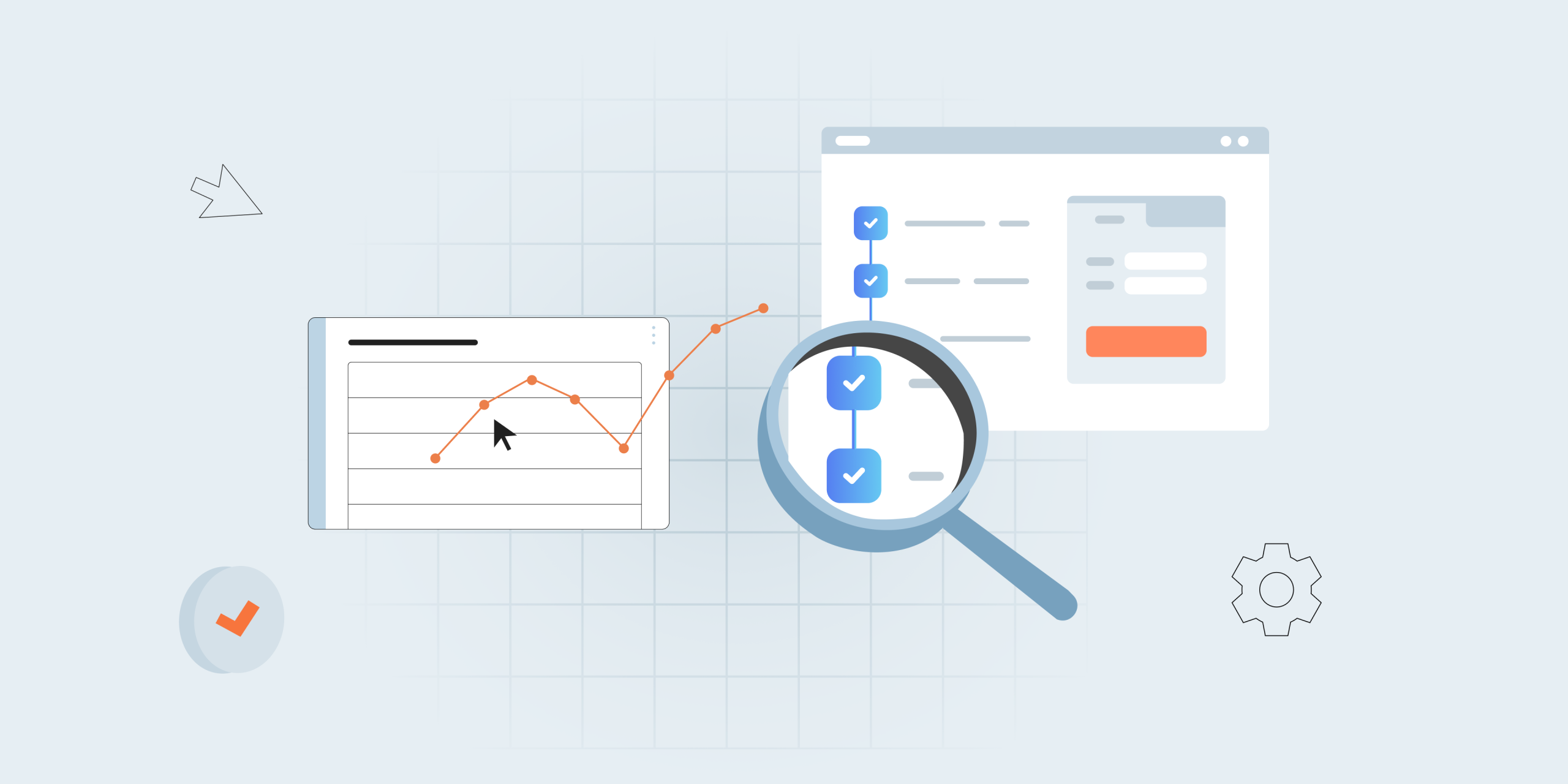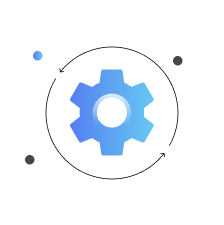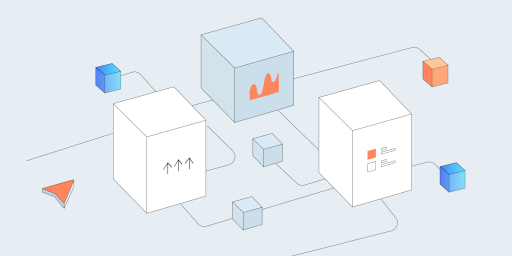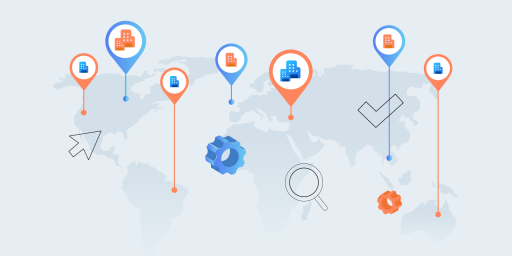Originally developed in the 1950s, mainframes are powerful, high-performance computing systems designed to handle large-scale transactions and data processing for enterprises. Despite their age, mainframes have only gotten more ubiquitous with age, continuing to be the backbone of critical industries like banking, healthcare, and retail.
Right now, mainframes handle 68% of global IT workloads while consuming just 6% of overall IT expenses. This exceptional reliability, availability, and security allows mainframes to remain widely used despite the existence of cloud solutions and edge computing. At the same time, mainframes require rigorous testing to ensure uninterrupted operations, data integrity, and seamless integration with modern applications. Find out how to test mainframes and what else to know to make the testing process even more effective.
What Is Mainframe Testing?
Mainframe testing is the process of testing software located on mainframe systems. The mainframe testing definition implies that its main aim lies in confirming that the execution and reliability of software or application are at the highest level and that the app is fully prepared to launch. It is performed on the deployed code for various data combinations set into the input file. Mainframe testing uses various validation procedures and approaches to ensure everything goes flawlessly.
Classification of Mainframe Manual Testing
According to the traditional classification, two significant types of mainframe testing are distinguished: online and batch job testing.
Online testing
Online testing is essentially testing CICS (Customer Information Control System) screens, the process similar to testing the web page. One can modify the functionality of the existing screens or add new ones. Applications can have inquiry and update screens. Thus, both screens’ functionality has to be checked in terms of online testing.
Batch testing
The batch job testing is the implementation of batch jobs for every functional element in the recent release. Mainframe batch testing is a two-phase process. At first, every job gets checked individually. Then, the interaction between them is validated by providing a file to the first job and validating the database.
Maximize your system reliability — partner with TestFort.
Key Benefits of Mainframe Testing

Mainframe testing is a complex process that requires a lot of time and resources, but it’s not something that can be considered optional, given how much of the company’s digital ecosystem depends on the mainframe’s normal operation. The advantages of performing mainframe testing include the following positive impacts:
- Making optimal use of resources: Ensures efficient allocation of hardware, software, and personnel by identifying bottlenecks, optimizing performance, and reducing system inefficiencies.
- Avoiding redundant work: Prevents teams from redoing tasks by catching defects early. Automated regression testing eliminates the need for repeated manual efforts.
- Improving user experience: Ensures that the system displays fast response times, reliable transactions, and seamless functionality, leading to higher user satisfaction and fewer complaints.
- Reducing production downtime: Minimizes unexpected failures through proactive testing, ensuring uninterrupted operations and preventing financial and reputational damage.
- Boosting customer retention: Reliable systems build customer trust, encouraging long-term loyalty by reducing service disruptions and ensuring smooth transactions.
- Lowering IT operational costs: Prevents expensive post-deployment fixes, reduces maintenance efforts, and cuts down on manual testing through automation.
- Ensuring compliance and security: Helps meet industry regulations and security standards by identifying vulnerabilities before deployment, protecting sensitive business and customer data.
- Enhancing scalability and future readiness: Enables mainframe systems to handle growing workloads and integrate with modern technologies, supporting long-term business growth.
Mainframe Attributes: What to Focus On in Testing
In mainframe testing, there are the following mainframe features that should be considered:
- Virtual storage
It aims to make disc storage more economical and efficient by simulating that real storage is more extensive.
- Multiprogramming
The essence of it is understandable — a computer runs multiple programs simultaneously.
- Batch Processing
This method allows for completing the task in parts.
- Time-Sharing
Every user gets access to the system via the terminal device.
- SPOOLing
Simultaneous Peripheral Operations Online is utilized to collect and save the output of an application or software, then the result may be sent to devices.
Best Approaches and Methodologies for Mainframe Testing
Mainframe application testing has been around long enough to give testers time to develop extensive knowledge of mainframe testing and design approaches and methodologies that take the efficiency of this testing task to the next level. Here are the most popular methodologies used in mainframe testing today.
Agile adaptation for mainframes
While mainframe systems traditionally follow waterfall methodologies, Agile principles can be applied to improve flexibility. This involves breaking testing into smaller iterations, enabling faster feedback and defect resolution. By adopting Agile ceremonies — such as sprint planning and retrospectives — mainframe teams can align better with modern development cycles.
Parallel and shift-left testing
Testing earlier in the development lifecycle prevents costly defects in production. By running functional and integration tests in parallel with development, teams can shorten release cycles without compromising quality. Implementing shift-left testing ensures that potential issues are identified before they impact operations.
Model-based testing
This approach uses predefined models of system behavior to generate test cases automatically. It is particularly useful for complex mainframe applications where manual test case design is time-consuming. Model-based testing helps increase coverage while maintaining consistency across test executions.
Hybrid cloud testing
Combining cloud resources with on-premises mainframe environments enables scalable testing while reducing infrastructure constraints. Hybrid cloud testing provides the flexibility to run large-scale performance tests and validate integrations with modern applications.
Eliminate risks with our testing expertise.
Types of Testing Used for Mainframes
Mainframes and approaches to testing them may be unique, but the types of testing mainframe solutions are not that different from the types used for regular software. Here are the types of testing most widely used in the mainframe testing process today.
Functional testing
Functional testing ensures that mainframe applications work as expected by validating business logic, data processing, and system interactions. It includes unit, integration, and system testing to confirm that individual components and end-to-end workflows function correctly.
System testing and system integration testing
This methodology involves the two testing types — batch and online — we have talked about earlier, as well as two others — online-batch integration and database testing.
Online-batch Integration testing is where the data of the online screens, batch jobs, and interaction between those two are checked.
Database testing is related to databases in which the data from the mainframe application layout and storage are validated.
System integration testing, in turn, aims to check the work of all the systems interacting with the tested system. The interacting systems don’t get directly impacted by the requirement, though considering that they use data from the primary system, one should validate the flow between them and their resultant actions.
Regression testing
This one is typical for any project. This testing activity aims to assure that the new functionality does not affect batch jobs and online screens that are not supposed to interact with the system directly and that new updates or fixes do not introduce defects in previously working functionalities.
Performance testing
Performance testing evaluates how mainframe applications handle high workloads, including transaction volumes and concurrent user requests. Load, stress, and scalability tests identify bottlenecks to ensure optimal system performance.
Security testing
Security testing is used to detect vulnerabilities, unauthorized access risks, and data breaches. It includes penetration testing, encryption validation, and compliance checks to ensure mainframe systems meet regulatory and cybersecurity standards.
Usability testing
In the context of mainframe testing, usability tests focus on the user experience for mainframe interfaces, ensuring accessibility, efficiency, and ease of navigation. This is especially important for modernized mainframe applications with web or mobile frontends.
Data validation testing
This activity tests data integrity, consistency, and accuracy in mainframe databases. It ensures that data transformations, migrations, and batch processing deliver correct results.
Disaster recovery testing
Disaster recovery testing is done by simulating system failures to verify backup and recovery processes. It ensures that mainframe environments can restore operations after hardware failures, cyberattacks, or data corruption.
How to Do Mainframe Testing
Each testing project is unique, and the range of activities largely depends on the specifics of the hardware and software parts, as well as business and technical requirements. At the same time, the testing procedure for mainframes can be broken down into several standard steps. Typically, the mainframe testing process consists of several stages, one leading to another, and here is what this process usually looks like.

Stage #1: Planning
The initial stage focuses on preparation. Teams must document the expected modifications and assess their impact on existing processes. Test cases and scenarios are then designed to ensure all affected areas are covered.
Stage #2: Scheduling
Once documentation is complete, testing teams align their schedule with the overall project plan. Proper scheduling ensures smooth collaboration between development and testing teams while minimizing disruptions to critical systems.
Stage #3: Deliverables
Before execution begins, all test deliverables are reviewed. Test plans, scripts, and data sets must be clearly defined and aligned with business objectives to ensure comprehensive validation.
Stage #4: Implementation
This stage involves executing test cases in two key phases:
- Testing requirements: Validates system functionality based on documented specifications.
- Testing integration: Ensures seamless data exchange across interconnected applications and system components.
Stage #5: Test execution and monitoring
After the implementation phase, the testing team executes the test cases in the mainframe environment. Continuous monitoring during execution is essential to track system performance, identify bottlenecks, and ensure that all requirements are met without affecting production operations.
Stage #6: Defect identification and fixing
During the execution, defects are identified, documented, and shared with the development team. The development team works on resolving the issues, followed by a re-test to ensure the fixes were successful. This cycle may repeat until the system passes all test scenarios.
Stage #7: Reporting
Test results are consistently shared with the development team for quick resolution of defects. Clear communication between teams enables faster issue resolution and ensures testing aligns with business goals.
Stage #8: Regression testing
After defects are addressed, regression testing is performed to ensure that recent changes do not negatively impact existing functionality. This step is crucial in maintaining the integrity of legacy systems while implementing updates or new features.
Stage #9: Project sign-off
Once all testing activities are completed, a final report is prepared, summarizing test results, defects, and resolutions. A sign-off from all relevant stakeholders indicates that the system is ready for deployment, ensuring business leaders are aligned with testing outcomes.
Stage #10: Post-deployment monitoring
After the system is deployed, post-deployment monitoring is critical for identifying any unexpected issues that may not have been caught during testing. This allows teams to address them proactively before they impact business operations.
Test Automation for Mainframe Solutions: Automation Testing Tools and Strategies
Manual testing is the cornerstone of ensuring the quality, stability, and security of mainframes. At the same time, most winning QA strategies typically include at least some degree of mainframe test automation. Mainframe automation testing is critical for maintaining the reliability and efficiency of applications while keeping up with modern development practices. Automating mainframe testing reduces execution time, enhances accuracy, and ensures continuous validation of critical business processes. It also enables integration with DevOps workflows, supporting faster releases and minimizing system downtime.
There are automation techniques suitable for pretty much every aspect of mainframe quality. Still, certain areas are a better fit for automation efforts — whether due to the fact that they are too time-consuming and resource-intensive when done manually, or due to the sheer amount of testing that needs to be done. However, several aspects of mainframe testing can particularly benefit from automation:
- Regression testing ensures that updates and bug fixes do not disrupt existing functionality.
- Performance testing assesses system response times and stability under heavy loads.
- Security testing automates vulnerability scans and compliance checks.
- Data validation testing verifies data accuracy across mainframe databases.
- API and integration testing ensures seamless communication between mainframes and modern applications.
Tools and techniques for mainframe automation testing
Selecting the right tools is crucial for successful mainframe test automation. Mainframe environments have unique architectures, requiring specialized solutions that can handle batch processing, complex data flows, and integration with modern applications. The best tools support functional, performance, security, and regression testing, ensuring comprehensive coverage across different mainframe components, as well as successfully integrating with DevOps and CI/CD pipelines, enabling continuous testing to align with agile development cycles.
Additionally, they should support service virtualization to allow testing without direct access to production environments, reducing costs and system dependencies. Several tools available today also support automated mainframe testing:
- IBM Rational Test: Automates functional, regression, and performance testing for mainframes.
- CA Test Automation: Provides automation for batch and online transactions.
- Selenium: Useful for automating web interfaces connected to mainframe applications.
- JMeter: Conducts performance and load testing for mainframe transactions.
- Micro Focus UFT: Supports automated GUI and API testing for legacy and modernized mainframe applications.
Get the results you want faster — Automate testing with us.
Challenges of Mainframe Testing
Mainframes are built to deal with highly specific tasks, which makes the challenges of mainframe testing highly specific as well. Here are the most common challenges the QA team must be prepared to tackle when dealing with this type of testing.
1. Limited testing environments
Mainframes are high-cost, mission-critical systems, often shared across multiple teams. Limited access to mainframe environments delays testing, while dedicated test environments can be prohibitively expensive. Additionally, executing tests on production systems risks data corruption and service disruptions.
How to overcome: Service virtualization enables teams to create simulated mainframe components, allowing testing without direct system access. Cloud-based mainframe testing solutions provide scalable environments at lower costs, improving flexibility while reducing dependency on physical mainframes.
2. Long execution times
Mainframes process vast amounts of transactions and rely on batch jobs, which can take hours or even days to complete. Running full regression and performance tests on these systems can significantly delay software releases. Manual testing further compounds the issue, making iterative testing cycles impractical.
How to overcome: Automating regression and performance tests helps speed up execution. Risk-based testing strategies focus on high-impact areas, reducing unnecessary test cases. Additionally, parallel processing techniques can help optimize execution times for large data sets.
3. Skills shortage
Many experienced mainframe professionals are nearing retirement, and few younger IT professionals specialize in mainframe technology. As a result, companies struggle to find skilled testers with expertise in legacy systems, leading to delays and increased costs.
How to overcome: Upskilling existing teams through training programs in modern mainframe testing tools — for example, IBM Rational and CA Test Automation — ensures continued support. Outsourcing mainframe testing to specialized vendors provides immediate access to expert resources while reducing hiring challenges.
4. Integration with modern architectures
Mainframes must now communicate with APIs, microservices, and cloud applications, creating complex dependencies. Testing these integrations is difficult because mainframes often rely on different programming languages, protocols, and transaction processing systems that are not inherently compatible with modern platforms.
How to overcome: Implementing API testing and service virtualization helps validate integrations without requiring full system access. Continuous testing in DevOps pipelines ensures real-time validation of interactions between mainframes and external applications, minimizing risks.
5. Compliance and security risks
Mainframes store vast amounts of sensitive data, making them prime targets for cyberattacks. Additionally, industries such as banking, healthcare, and government must adhere to strict regulatory requirements like GDPR, PCI DSS, and HIPAA. Non-compliance can lead to severe penalties and reputational damage.
How to overcome: Automating security and compliance testing ensures early detection of vulnerabilities and regulatory issues. Regular penetration testing, role-based access control, and real-time security monitoring help protect mainframe data and ensure adherence to industry standards.
6. High testing costs
Mainframe testing requires specialized tools, dedicated environments, and skilled professionals, all of which contribute to high costs. Maintaining legacy systems while investing in modern testing technologies can strain IT budgets.
How to overcome: Cloud-based testing platforms reduce infrastructure costs while improving scalability. Open-source and hybrid testing solutions help minimize licensing expenses. A risk-based testing approach ensures that the most critical components receive priority, optimizing test coverage without unnecessary spending.
7. Difficulty in implementing Agile and DevOps
Mainframe development traditionally follows the waterfall methodology, making it difficult to align with Agile and DevOps practices. The slow pace of mainframe change management can create conflicts with the need for rapid iteration in modern software development.
How to overcome: Integrating automated testing into CI/CD pipelines enables faster feedback loops. Encouraging collaboration between mainframe teams and DevOps groups helps break down the blockages. Implementing test automation frameworks designed for mainframes ensures that testing keeps pace with modern development cycles.
Stay secure, stay compliant, stay efficient — we will make it all happen.
Best Practices for Mainframe Software Testing
Mainframe applications are critical to business operations, requiring a structured and reliable testing approach for a smooth, uninterrupted run. Unlike modern cloud-based systems, mainframes often run complex, high-volume transactions with strict uptime requirements. This means that in order to ensure stability, security, and performance, businesses must adopt best practices tailored to the unique challenges of mainframe environments. These are the best practices to consider when testing mainframes.
1. Define clear test objectives and coverage criteria
Establishing precise goals for functional, performance, and security testing ensures that all critical mainframe components are validated. Creating detailed test coverage maps helps teams focus on high-impact areas, reducing unnecessary testing efforts.
2. Maintain a centralized test data management strategy
Mainframes handle vast amounts of structured data, making test data integrity essential. Using data masking and synthetic test data generation ensures compliance with privacy regulations while enabling realistic test scenarios.
3. Implement robust change management processes
Given the stability requirements of mainframe applications, even minor updates can introduce risks. A well-defined change management process, including impact analysis and controlled rollouts, prevents disruptions and ensures smooth software releases.
4. Adopt environment-independent testing approaches
Separating test cases from specific environments improves flexibility. Using emulators, cloud-based testing environments, and virtualization tools allows testing to continue even when mainframe access is restricted.
5. Validate batch processing and job scheduling
Since many mainframe applications rely on batch jobs, testing should include validation of job execution, error handling, and scheduling dependencies. Ensuring that jobs execute in the correct sequence prevents operational failures.
6. Ensure backward compatibility with legacy applications
Many enterprises still run decades-old mainframe applications alongside modern systems. Testing should confirm that new updates do not disrupt legacy workflows, ensuring seamless interoperability across different versions and platforms.
7. Establish real-time monitoring and analytics for test execution
Integrating real-time dashboards and analytics into mainframe testing provides instant insights into test performance, defect trends, and system stability. Proactive monitoring helps identify anomalies before they impact production.
Mainframe Testing in 2025: Key Trends and Technologies
Testing software for the mainframe has been around for decades, but it has been constantly transforming and improving to accommodate the increasingly crucial role of mainframe computing in today’s digital ecosystems and the latest developments in the world of tech. Here are the trends and technologies used today for ensuring the software system is secure, reliable, and continues to meet the company’s needs.
The role of AI and automation
AI-driven test automation speeds up mainframe testing, reducing manual effort and errors. Machine learning improves defect detection and test coverage. Automated scripts ensure stability after updates. For business leaders, automation means cost savings, faster releases, and improved software quality. Investing in AI-powered tools helps modernize legacy systems while maintaining reliability and adaptability.
Continuous testing for mainframes
Continuous testing ensures early defect detection, reducing costly failures in production. It integrates with CI/CD pipelines, improving agility and reliability. By testing mainframe applications frequently, businesses prevent service disruptions and enhance security. Leaders should prioritize shift-left testing to meet compliance requirements and maintain operational efficiency.
Cloud-based mainframe testing
Cloud-based testing reduces infrastructure costs while enabling scalable and flexible test environments. Virtualized mainframe testing accelerates execution, improves collaboration, and supports disaster recovery. Business leaders should explore cloud solutions to enhance efficiency while ensuring robust quality assurance for critical mainframe applications.
Service virtualization for mainframe testing
Service virtualization mimics mainframe components, enabling parallel testing without full system access. It reduces costs, accelerates development, and ensures comprehensive test coverage. Leaders should consider this approach to improve efficiency, especially for complex transactions and third-party integrations.
Shift to risk-based testing
Risk-based testing prioritizes business-critical functions like transaction processing and security. Instead of exhaustive testing, it optimizes resources to focus on high-impact areas. Testers should adopt this strategy to balance quality assurance, cost-effectiveness, and operational stability.
Compliance-driven testing
Automated compliance testing ensures mainframes meet evolving regulations without manual effort. It reduces legal risks, prevents penalties, and strengthens security. Organizations should invest in compliance-driven testing to maintain regulatory adherence and long-term business continuity.
Bridging the skills gap
With mainframe experts retiring, businesses face a skills shortage. Companies running mainframes must invest in upskilling, hiring, or outsourcing. Training preserves institutional knowledge, while outsourcing provides access to specialized expertise. A hybrid approach balances internal capability with external support, ensuring long-term mainframe reliability.
Speed up releases with AI-powered testing.
Final Thoughts
Mainframe computers still play a vital role for large companies in every domain imaginable. So, it is — and will continue to be — essential to test the applications hosted in the mainframe before the launch. Both batch job and online testing should be performed rigorously and with particular attention to detail not to miss any functionality elements stated in the requirement documents, and no test case should go unnoticed. Only then can you be fully confident in your solution’s quality and anticipate the best possible outcomes.
Jump to section
Hand over your project to the pros.
Let’s talk about how we can give your project the push it needs to succeed!
